Prasat Ta Muen Thom

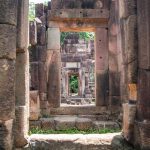
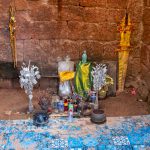
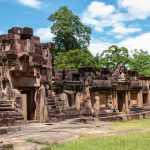
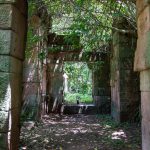
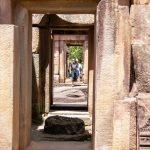
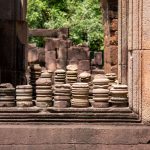
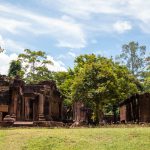
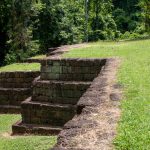
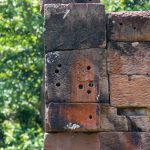
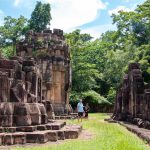
Prasat Ta Muen Thom
Location : Ban Nong Kanna, Ta Miang Sub-district, Phanom Dong Rak District, Surin
Opening time : 09:00 – 15:00 (no admission fees)
Website : www.finearts.go.th/surinmuseum
Prasat Ta Muen Thom is a large temple of sandstone and laterite constructed according to the Hindu sect of Shivaism’s principles. It was discovered in the excavation of the Fine Arts Department in 1990-1991 and it was revealed that it is built on a sandstone hill using partially natural rocks for the base. Further excavation until the natural rocks level revealed that this area was used for religious rituals of this cult in 2 eras during the 12th and 16th Buddhist centuries. The complex consists of :
Main chapel. A 6 x 6 m. square layout with recessed corners housing a Phallus sculpture, symbol of Shiva, the highest god, in the Hindu faith in the middle chamber. This phallus was made from a rock which already resemble a phallus and the chapel was built to enclose it. As this is a natural phallus it is a sacred and most important edifice in the Shivaism sect and is called a “Svayambhuva Linga”. The building has doorways in all 4 directions. The south doorway is connected to the front bay and divided into 3 chambers with a sandstone roof. The base has carvings of standing deities and a lintel was also found with motifs of a sitting deity with one raised knee under a canopy on a demon-deity who is disgorging a garland.
Minor chapels or pagodas. There are two made from sandstone at the back of the main chapel to the left and right. The layout is square with recessed corners size of 6.80 x 6.80 m. with one entrance on the south wall and decorative door frames on the rest of the walls.
Library. There are two built of Laterite, one is on the southeast of the main chapel size of 4.80 x 9.30 m., rectangle and with an entrance to the south. The other is to the southwest of the main chapel, square layout size of 4.80 x 4.80 m.
The main chapel, minor chapels and library is enclosed within a colonnade with a sandstone arch gateway. The colonnade’s layout is a 47.50 x 47.50 m. square, 3 meters wide with a 1.40 m. wide walkway and arch gateways on all 4 sides. The gateways at the north, east and west are the same but the one at the south wall is the biggest being the main gate. It is divided into 3 chambers and the middle chamber’s layout is a cross with colonette windows. Stone inscriptions were found along this colonnade inscribed in ancient Khmer, Sanskrit and Khmer which was the language used at the end of the 16th Buddhist century. The contents were praising of Shiva along with references to names of slaves and officers guarding this shrine. (as per translation by Ms.Kongkaew Veeraprajak, National Library, Fine Arts Department).
Another discovery is a sandstone pier 10 meters outside the colonnade to the south and a pond tiled with layers of laterite narrowing down to the bottom. This pond is a 26 x 26 m. square pond located on the northwest outside the colonnade.
Era : From the architectural style, stone inscriptions, sculptures of sacred figures and the motifs on the lintel it can be assumed that Prasat Ta Muen Thom is a holy site of the Brahmin faith of Shivaism in 2 periods, 12th and 16th Buddhist century.
Travelling : From Surin go along highway 214 until Prasat District, turn right into road no. 24 then turn left into road no. 2397, turn right into road no. 224 and finally into road no. 2407. Distance total of 82.7 km.
Ancient Site Proclamation : Definition of number of National Ancient Sites. Announced in the Royal Gazette, volume 52 page 3712 on 8 March 1935
